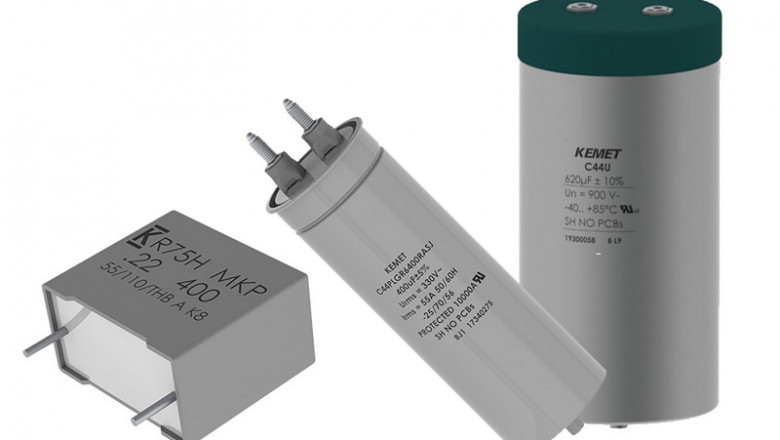views
The global power capacitors market is witnessing steady growth, supported by the expansion of electricity networks, increasing energy demand, and the push toward renewable energy sources. As power systems evolve, so too does the importance of components that enhance efficiency and stability power capacitors are one of those components. But like any market, their adoption and development don’t happen in isolation.
In this blog, we take a closer look at the key factors impacting the power capacitors market from technological drivers to economic and regulatory pressures.
1. Growing Demand for Energy Efficiency
One of the most significant factors shaping the power capacitors market is the global push toward energy efficiency. Whether in industrial plants or commercial buildings, improving power factor and reducing energy waste have become top priorities. Power capacitors play a direct role in achieving these goals by correcting the lagging power factor, reducing electricity losses, and optimizing overall energy usage.
Governments and utilities in both developed and developing countries are offering incentives or mandating energy-efficient practices, which further supports the growth of capacitor installations.
2. Modernization of Power Infrastructure
In many countries, aging electrical grids are in urgent need of upgrades. Modernizing these systems often includes integrating technologies that ensure voltage stability, lower transmission losses, and accommodate increasing loads—roles well-suited for power capacitors.
Power utilities are now replacing older capacitor banks with more advanced, efficient systems that can be monitored and controlled remotely. As infrastructure investment continues, especially in North America, Europe, and parts of Asia, demand for power capacitors will remain on a growth trajectory.
3. Renewable Energy Integration
As the global energy mix shifts toward renewables like solar and wind, power capacitors are gaining new relevance. Renewable energy sources tend to be variable and intermittent, leading to instability and power quality issues within the grid. Capacitors help stabilize voltage and regulate reactive power, making it easier to integrate renewable sources without disrupting the grid.
Solar farms, wind turbines, and even hybrid systems now rely on capacitor banks for efficient operation. This growing demand from the renewable energy sector has become a major growth driver.
4. Industrialization and Urbanization in Emerging Markets
Emerging economies, particularly in Asia-Pacific, the Middle East, and parts of Africa, are undergoing rapid industrialization and urban expansion. This translates into higher electricity demand and an urgent need for efficient power distribution networks.
Industries in these regions are increasingly deploying capacitors to reduce power bills, avoid penalties from poor power factor, and ensure uninterrupted operations. The growing number of industrial zones, commercial centers, and new urban infrastructure projects is directly boosting the demand for power capacitors.
5. Technological Advancements in Capacitor Design
Advancements in materials and manufacturing processes have led to smaller, more durable, and higher-performing capacitors. Film capacitors, for instance, offer better thermal performance and longevity, making them ideal for demanding applications.
Smart capacitors equipped with sensors and communication systems—are also emerging. These can be monitored in real time and integrated into smart grid control systems. As utilities and industries digitize their operations, these “intelligent” capacitor solutions are expected to gain market share.
6. Raw Material Costs and Supply Chain Constraints
On the downside, fluctuations in raw material prices especially for aluminum, polypropylene, and rare earth elements—can impact manufacturing costs and product pricing. The COVID-19 pandemic and geopolitical tensions have exposed vulnerabilities in global supply chains, causing delays and increasing operational risks for capacitor manufacturers.
These challenges often lead companies to diversify their supplier base or invest in local production, which can shift regional market dynamics.
7. Regulatory and Environmental Compliance
Environmental regulations are becoming more stringent, especially regarding the disposal and recycling of electrical components. In response, manufacturers are investing in greener capacitor technologies, such as dry-type capacitors and the use of non-toxic dielectric materials.
Compliance with international standards (like IEC and IEEE) also plays a crucial role in market competitiveness, particularly in government or utility tenders.
Conclusion
The power capacitors market is influenced by a complex set of factors ranging from global energy trends and industrial expansion to material costs and regulatory shifts. While opportunities for growth are strong especially in renewable integration and infrastructure upgrades challenges like raw material volatility and supply chain instability must also be managed.
For industry players, success will come from staying agile, investing in innovation, and aligning product offerings with both current demand and future needs. The market isn’t just growing—it’s evolving, and those that adapt will lead the charge.





















Comments
0 comment